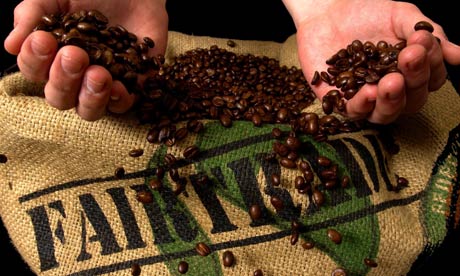Lily Holland has just finished a semester student teaching in a second grade classroom in New London where she learned an infinite amount about education, what it takes to be a great teacher, and just how energetic seven-year-olds can be. Read her own account of her student teaching experience here. Her second graders wrote the following insightful article about fair trade, humane treatment of animals, and organic food.
In our class we studied ways you can eat to contribute to a better world. Some ways you can help are by buying foods that are fair trade, organic, locally grown or come from humanely treated animals. We started by asking questions about what we wanted to know more about. Then, in small groups we researched these labels. We also had a taste test of organic and conventional food, looked at maps, solved math problems and read books to get information. On Monday, we took a field trip to Fiddleheads to see what kind of these products you can get nearby. This article will tell you what you can do to contribute to a better world.
Humane treatment of farm animals means the animals lived a happy life before they became food. The animals had fresh air, healthy food, weren’t given antibiotics or hormones and they could walk around because the animals aren’t crowded in. It is better for the environment and people who live nearby because there is less contamination from manure. Humane farms have nicer working conditions than factory farms. Humanely raised animals produce food that can be safer for our bodies. Some labels you could look for are “free range”, “grass-fed”, “cage-free” and “certified humane”. At Fiddleheads we learned that humanely treated animal products are more expensive than factory farm products. This is because factory farm animals aren’t treated nicely which is less expensive to do.
Locally grown food is food that was made or harvested close to home. For us, that is food that was grown or produced in Connecticut. The food you can find on farms in Connecticut changes with the seasons. Right now, apples, greens, winter squash, pears and turnips are some of the foods that are in season. Local food is better for the environment because it takes less fuel to get it to your home. Locally grown and produced food can also better for farmers and animals. Fiddleheads is a great place to find locally produced food like milk, eggs and bread.
Organic food is food that was grown without pesticides or produced from animals that were not given hormones or antibiotics. Organically raised animals have happier lives before they become food. This can be better for farmers and people who live near the farm because they are not around chemicals. Organic food is better for the environment because no pesticides are used so chemicals don’t contaminate our air, water and soil. Some examples of foods you can buy that are organic are meat, milk, eggs, poultry, coffee, fruit and vegetables. At Fiddleheads, we figured out that organic food usually costs more money than conventional food.
Fair trade means workers are paid a fair price for their work. In math, we learned that in some places in the world, farmers only make $6 a day. This means they can’t always afford things like medicine and school supplies. With a fair trade wage they can afford these things. Fair trade is better for the environment because the farmers don’t use pesticides. Some examples of food you can buy fair trade are chocolate, coffee, fruit, vegetables and tea. At Fiddleheads, we noticed that a lot of foods that had the fair trade sticker also had an organic sticker.
We learned that food that is fair trade, organic, local or humanely raised are better for the environment, animals, farmers, people who live ear farms and the farmers’ families. These types of foods are often more expensive than conventional foods. Sometimes these products can be harder to find. You can find fair trade, organic, local and humane certified stickers and labels at Fiddleheads and sometimes at supermarkets. If you want to contribute to a better world, start by asking questions, like “who benefits from the way this food was made and who doesn’t?” You could also write letters to farmers, retailers and food companies. You don’t always have to buy these types of foods, but anytime you can do something, it’s better than nothing!
– Ms. Lily’s 2nd grade class












I do not understand how jobs will be created when many United States businesses are spending their profits in another country. Take General Electric by way of example. General Electric’s current project to build jet engines for China will lead to them passing over their designs for the engines they build. A different company, Yum Brands, is getting over 50% of its income from outside the USA. Until trade agreements are altered, more job losses is unavoidable.